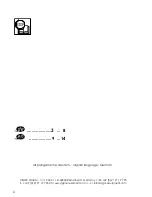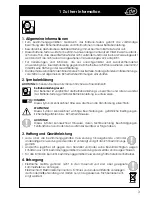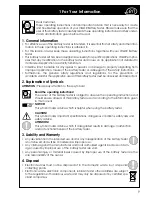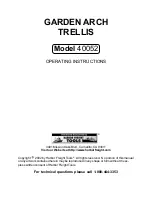
13
3. Application
Battery Voltage Test
• Connect the clamps to the battery.
Do not actuate the load switch. Battery voltage is shown in the display, without actuating
the switch.
• If the battery voltage is below 12.3V or above 13.2V the load can not be tested.
If the load test is made all the same, “c.b.” (charge battery) will be shown on the display.
• If the battery voltage is below 12.3V, please fully charge the battery before testing. After
charging please wait 15 to 30 minutes before repeating the voltage test.
If the reading is still below 12.3V and “c.b.” is indicated in the display, the battery should be
replaced immediately.
• If the battery voltage is above 13.2V, please check if the battery has just been charged. If
so, please wait 15 to 30 minutes before starting a further voltage test.
Battery Load Test
• Connect the clamps to the battery. Battery voltage is shown in the display.
• Press and hold the load switch for 10 seconds. Thus, internal load resistance is connected
in and the battery is loaded with 100 ampere. This is about the electricity consumption of a
medium-sized vehicle with common equipment (~1,200 W).
Due to load the battery tester heats up.
Do not press the load switch longer than 10 seconds.
After finishing the load test the battery tester has to cool down for at least 5 minutes.
Meaning of the test results – after 10 seconds of load:
GREEN LED
LIGHT:
Battery capacity is good.
Determine acid density of the battery with suitable tester. If necessary
recharge battery.
GREEN /
YELLOW LED
LIGHT
Battery capacity is unsatisfactory. Battery may be either defective or dis-
charged.
Determine acid density of the battery with suitable tester. Recharge bat-
tery and re-test.
RED LED LIGHT Battery may be defective, e.g. a bad cell or discharged. Release load
switch.
Determine acid density of the battery with suitable tester. Recharge bat-
tery and re-test.
Testing the charging System
1. Connect the negative (black) clamp to the negative (NEG, N, -) battery terminal and
the positive (red) clamp to the positive (POS, P, +) battery terminal. Press the load switch
(ENTER). “TEST STATE – CHARGING AND LED LIGHT” will light up.
2. Start the engine and allow it to reach normal operating temperature.
3. Run engine at 1200 to 1500 rpm.
cAuTIOn :
Stay clear of moving engine parts.
4. Read the voltmeter. A reading with the red LED lighted up indicates a problem in the
charging system that adds to undercharging (less than 13.6 V) or overcharging the battery
(over 14.8 V). (Follow vehicle manufacturer’s instructions). Please refer to voltmeter and dis-
play test results.
3 Design and Function


































